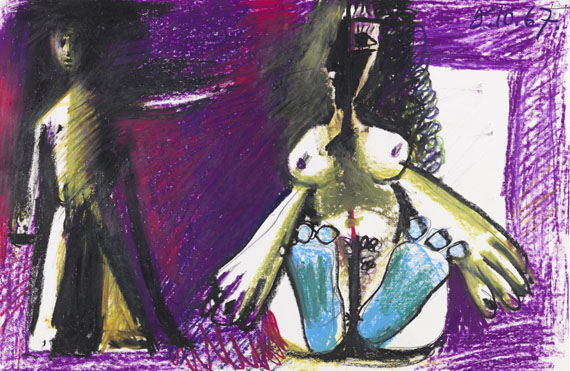Dictionary


Orphism
Orphic Cubism or Orphism describes an advanced form of Analytic Cubism, it was developed in 1912 and coined by Robert Delaunay (1885-1941), however, it lasted for a short time only.
The term was introduced by Guillaume Apollinaire in 1912, as a result of his ambition to grasp the rhythmic and poetic impression of cubist art with a term referring to the mythic singer Orpheus. The artists' group "Section d'Or" was in close connection with Orphic Cubism.
Eugène Chevreul's teachings of colors' simultaneous contrasts, which had had a major influence on Post-Impressionism, also influenced Orphic Cubism, which intended a more significant role for colors and the effects of the light than it was the case with Analytic Cubism. The abstraction of Wassily Kandinsky and Futurism were also fruitful for Orphism; a parallel phenomenon was Russian Rayonism.
Rhythmically arranged and often apparently crystalline color fields led to a "pure painting" abstract from the object, as it was especially the case with the art of Robert Delaunay, which possessed a deeply lyrical expressive power. His series of "Window Pictures" and the theorizing "simultaneous panes" are regarded highlights of Orphism.
Orphic Cubism had its strongest impact on German painting, where it was spread by Franz Marc, August Macke and Paul Klee.
Besides Robert Delaunay, his wife Sonia Delaunay-Terk (1885-1979), who also created textile works and arts and crafts in the style of Orphism, František Kupka (1871-1957) and Raymond Duchamp-Villon (1876-1918) are other representatives of orphic Cubism, which would later also influence Op Art.
Orphic Cubism or Orphism describes an advanced form of Analytic Cubism, it was developed in 1912 and coined by Robert Delaunay (1885-1941), however, it lasted for a short time only.
The term was introduced by Guillaume Apollinaire in 1912, as a result of his ambition to grasp the rhythmic and poetic impression of cubist art with a term referring to the mythic singer Orpheus. The artists' group "Section d'Or" was in close connection with Orphic Cubism.
Eugène Chevreul's teachings of colors' simultaneous contrasts, which had had a major influence on Post-Impressionism, also influenced Orphic Cubism, which intended a more significant role for colors and the effects of the light than it was the case with Analytic Cubism. The abstraction of Wassily Kandinsky and Futurism were also fruitful for Orphism; a parallel phenomenon was Russian Rayonism.
Rhythmically arranged and often apparently crystalline color fields led to a "pure painting" abstract from the object, as it was especially the case with the art of Robert Delaunay, which possessed a deeply lyrical expressive power. His series of "Window Pictures" and the theorizing "simultaneous panes" are regarded highlights of Orphism.
Orphic Cubism had its strongest impact on German painting, where it was spread by Franz Marc, August Macke and Paul Klee.
Besides Robert Delaunay, his wife Sonia Delaunay-Terk (1885-1979), who also created textile works and arts and crafts in the style of Orphism, František Kupka (1871-1957) and Raymond Duchamp-Villon (1876-1918) are other representatives of orphic Cubism, which would later also influence Op Art.
Offers
Headquarters
Joseph-Wild-Str. 18
81829 Munich
Phone: +49 89 55 244-0
Fax: +49 89 55 244-177
info@kettererkunst.de
Louisa von Saucken / Undine Schleifer
Holstenwall 5
20355 Hamburg
Phone: +49 40 37 49 61-0
Fax: +49 40 37 49 61-66
infohamburg@kettererkunst.de
Dr. Simone Wiechers / Nane Schlage
Fasanenstr. 70
10719 Berlin
Phone: +49 30 88 67 53-63
Fax: +49 30 88 67 56-43
infoberlin@kettererkunst.de
Cordula Lichtenberg
Gertrudenstraße 24-28
50667 Cologne
Phone: +49 221 510 908-15
infokoeln@kettererkunst.de
Hessen
Rhineland-Palatinate
Miriam Heß
Phone: +49 62 21 58 80-038
Fax: +49 62 21 58 80-595
infoheidelberg@kettererkunst.de
We will inform you in time.




